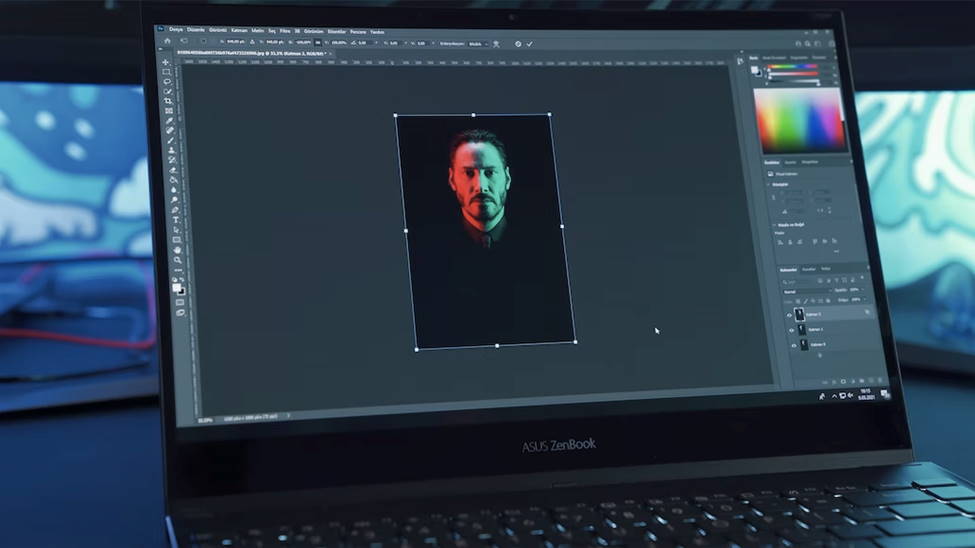Most of us have used image enhancement tools to do things like deblur and sharpen photos and eliminate noise from images.
But have you ever stopped to wonder how the process of image enhancement actually works?
There’s no need to have an in-depth technical understanding in order to grasp how image enhancement works in its basic form. Instead, the following simple guide will tell you all you need to know.
The Two Main Image Enhancement Techniques
Image enhancement is the process of highlighting specific information contained in an image and removing or weakening any unnecessary information.
The information that is removed or weakened will depend on one’s specific needs. For instance, the information in an image could be removed or weakened to deblur, eliminate noise, or adjust highlights.
The techniques employed for image enhancement fall into two broad categories: frequency domain and spatial domain.
Frequency Domain
This technique involves applying the Fourier Transform to an image’s spatial domain.
If you aren’t aware, the mathematical term Fourier Transform refers to a transform that converts a function into a form that is able to describe the frequencies that are present in the original function.
The output is a complex-valued function of frequency.
When applying the Fourier Transform to an image’s spatial domain, pixels are operated both in groups and indirectly in the frequency domain.
Spatial Domain
The spatial domain technique enhances the image space that divides an image into uniform pixels, based on spatial coordinates that have a certain resolution.
The spatial domain method performs operations on the pixels of an image directly.
The two types of spatial domain operators are point operation and spatial filter.
The former refers to running the same conversion operation for every pixel contained in a grayscale image. The transformation is based on the original pixel, independently of its location and the neighboring pixels.
With the latter, spatial filter, the output value depends on its neighborhood and values.
Compression
Compression, in regard to image enhancement, refers to reducing the number of usable pixels.
In still images, image enhancement is all about amplifying the image signal by using compressed sensing.
The mathematical tool is capable of taking low-resolution photos and turning them into high-resolution images.
Basically, that works by continually layering colored shapes into areas in which there are missing pixels in order to achieve sparsity, which, in image enhancement, refers to measuring image simplicity.
Compression can also be used to enhance noisy and grainy video. The enhancement is often achieved via spatial noise reduction and image smoothing.
The former reduces spatial noise in each frame as well as temporal noise between frames, both of which can be combined for spatial-temporal noise reduction.
The latter, image smoothing, is a technique used in digital image processing to suppress and reduce image noises.
Different smoothing filters are available. The most commonly used ones are Gaussian smoothing, average smoothing, and adaptive smoothing.
If you’re not aware, noises are introduced to images during the point of capture from taking a shot with a camera, printing, or transmission.
Noises can be identified with a variety of intensity from the neighboring pixels.
Multiple types of noises exist. For instance, salt-and-pepper noise, which is also known as impulse noise, scatters white or black pixels in a random manner over an image whereas Gaussian noise changes every pixel in an image by a small amount.
Basically, noise removal methods reduce the visibility of noises via smoothing the image using non-linear or linear filters.
How to Enhance Your Photos
You don’t actually need to understand how image enhancement works to make use of image enhancement tools.
There are a wide variety of image enhancement tools available. The easiest option is to use image editing software that features a broad range of image enhancement tools.
The tools are usually very easy to use. Sometimes, all it takes is a single click to enhance an image.
For instance, only a single click is required to use BeFunky’s photo enhancement tool, which can improve image color, sharpen blurry images, denoise images, and much more. BeFunky even has a sophisticated A.I. image enhancement tool that you can use.
Final Thoughts
It’s quick and easy to use a variety of image enhancement tools to accomplish a number of things in an image, such as sharpening it, reducing the noise level, and enhancing the vibrancy of the colors.
And now that you know the basics of how such tools work, you’re sure to admire how sophisticated such tools are the next time you use an image enhancement tool.
The above guide is great for learning the basics of image enhancement, but if you’re interested in learning about how image enhancement works in a deeper and more technical way, then simply research things like frequency domain, spatial domain, and compression online.
You may also be interested in reading this post about how to remove the transparent pixels that surround a canvas in JavaScript.








